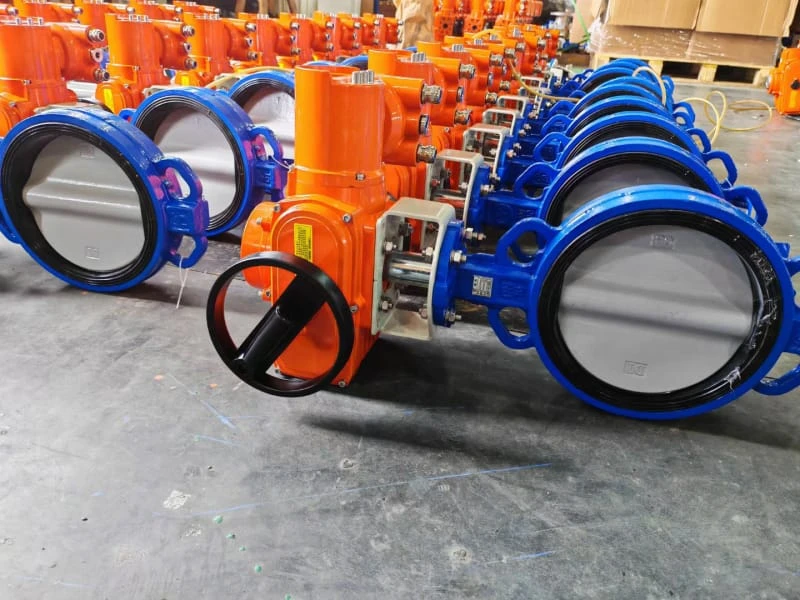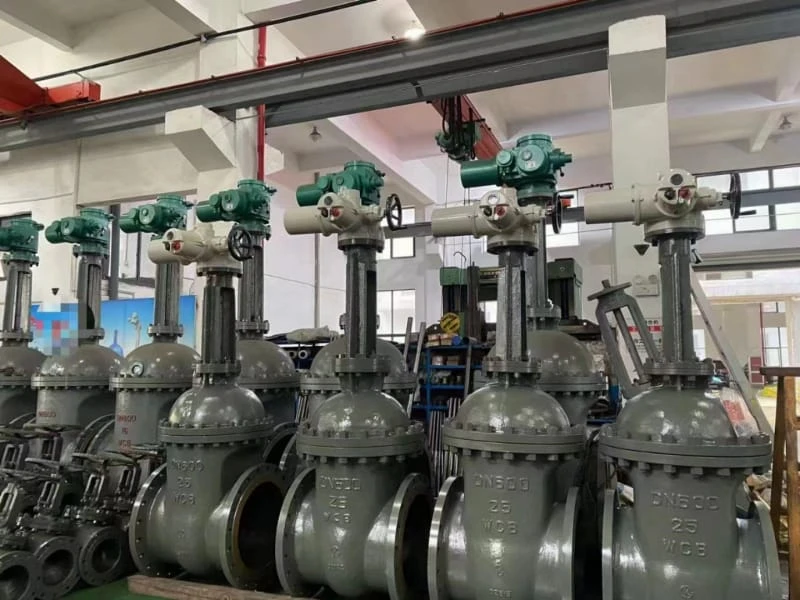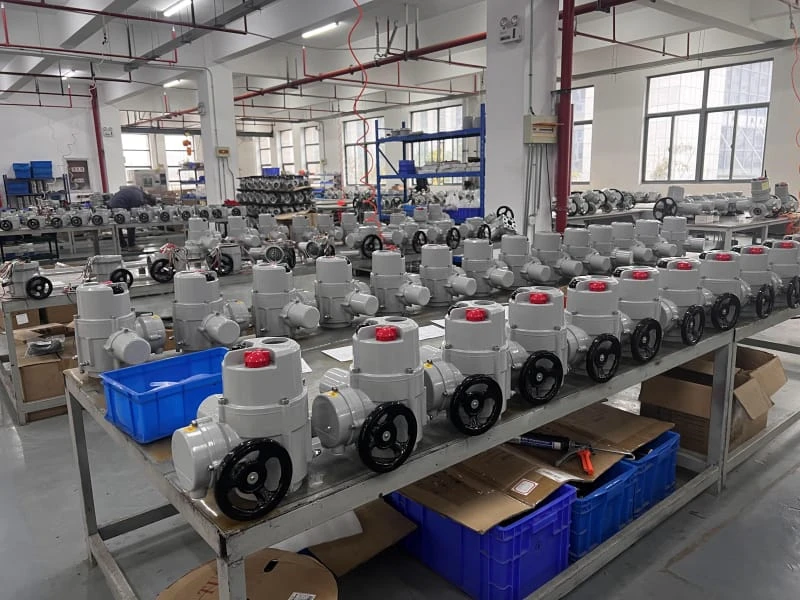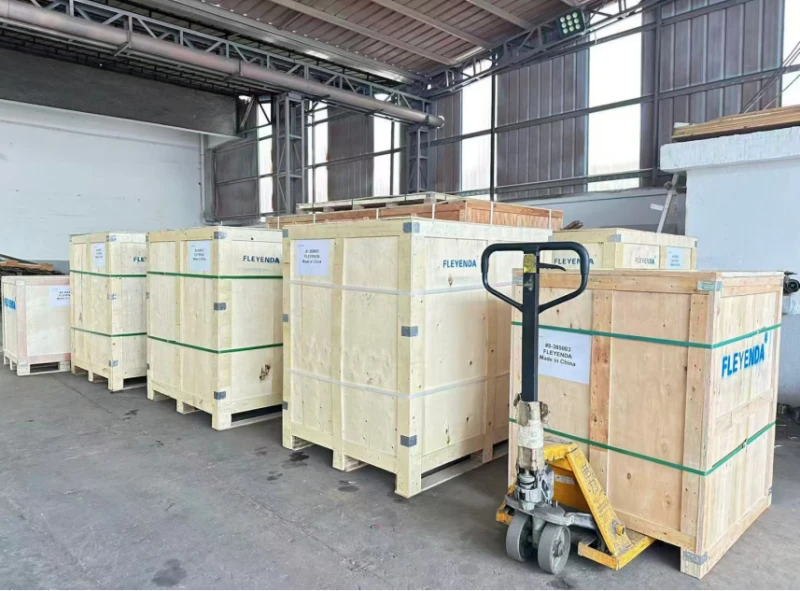FLE-Q-TF Electric 3 Way Flange Ball Valve
The Electric 3 Way Flange Ball Valve features an L/T-port full-bore design with electric actuation, providing precise flow diversion or mixing with zero leakage; its stainless-steel body, PTFE seats, and IP68 actuator ensure long service life, verified by 100,000 cycles and certified to API 598 and CE standards.
Technical Specifications
| Size Range | DN15 – DN200 (1/2″ – 8″) |
| Working Pressure Range: | PN10 – PN40 (Class 150 – 300) |
| Working Temperature Range: | -20°C to +180°C |
| Body Material: | Stainless Steel (CF8 / CF8M), Carbon Steel (WCB) |
| Connection Type: | Flanged End (DIN, ANSI, JIS) |
| Applicable Medium: | Water, Air, Oil, Steam, Acid, Alkali, Corrosive Liquids |
| Actuator Type: | Electric Rotary Actuator |
| Voltage Options | AC110V, AC220V, AC380V, DC24V |
| Design Standard | GB/T 12237, ASME B16.34, API 6D, ISO 5211 |
| Testing Standard | API 598, EN 12266-1, ISO 5208 |
| Fire-Safe Design | API 607 / ISO 10497 (Optional) |
| Certification | CE / ROHS / ISO / SIL / TUV /IP68 Waterproof |
| Customization | Above Are Standard Parameter Samples. If You Have Specific Parameters And Materials, We Can Customize Them All. |
Product Drawings

Comprehensive Technical Drawing (Dimensions & Structure)
Product Benefits & Features
1. Flow Control Versatility
• Electric 3 Way Flange Ball Valve supports L-port and T-port configurations for precise diversion, mixing, or distribution.
• Full-bore design minimizes pressure loss and ensures smooth flow.
• Ideal for automated HVAC, chemical, and water treatment systems.
• Reduces valve quantity and simplifies complex piping layouts.
2. Durability & Safety Performance
• Stainless steel or carbon steel body resists corrosion and high pressure.
• PTFE or RTFE seats maintain tight sealing under temperature variation.
• Fire-safe per API 607 and ISO 10497 standards.
• IP67/IP68 actuator housing protects against dust and moisture.
3. Smart Electric Actuation
• Electric actuator ensures accurate control and feedback.
• Compatible with AC110V, AC220V, AC380V, and DC24V systems.
• Supports on/off and modulating operation for automation.
• ISO 5211 mounting allows fast actuator replacement.
4. Efficiency & Maintenance Advantages
• One 3 Way Electric Flange Ball Valve replaces multiple valves, saving space and cost.
• Leak-proof structure lowers maintenance frequency.
• Energy-efficient design improves process reliability.
• Certified by API, CE, and RoHS for global compliance.
Why Choose Fleyenda Valve Manufacturing
Product Stability
We use reinforced structures and precision sealing to ensure consistent performance under pressure and temperature changes.
Conpany&Product Certification
We have CE, RoHS, ISO, SIL, TUV, and IP68 waterproof certifications covering safety, quality, and environmental standards.
Projects Experience
Cooperated over 40 countries, we have experience in oil & gas, energy, water, chemicals, food & beverage, and automation.
Customization Capability
With 20 years experience, we turn complex working conditions into precise valve solutions with high speed and accuracy.
Aftersales Support
•We have technical team provides real-time video support to help customers resolve on-site issues quickly.
Customer Cases
Trusted by Shell plc, Petronas, Chevron, TotalEnergies, and Dupont in projects across 40+ countries.
Our Product Actual Export Pictures






FAQs That 80% Users Interest
1. What flow configurations are available with the Electric 3 Way Flange Ball Valve and how do I choose the right one?
• Supports L-port and T-port configurations for diverting or mixing flow.
• L-port is ideal for switching one inlet between two outlets.
• T-port handles blending or simultaneous flow paths.
• Seat design and full-port options affect pressure drop and flow efficiency.
2. Can the Electric 3 Way Flange Ball Valve be integrated into automated control systems?
• Compatible with electric actuators for remote control and position feedback.
• Works with AC110V, AC220V, AC380V, or DC24V systems in on/off or modulating mode.
• Flanged connection ensures stable installation in industrial pipelines.
• Proper actuator torque and flange standard guarantee reliable performance.
3. What should I consider for media compatibility and operating conditions when choosing an Electric 3 Way Flange Ball Valve?
• Select stainless steel or carbon steel body with PTFE or RTFE seats based on medium type.
• Verify pressure and temperature limits to ensure safe operation.
• Choose IP67/IP68 actuators or fire-safe designs for harsh environments.
• Match flow rate and port size to avoid pressure loss or cavitation.
4. How can I extend the service life of an Electric 3 Way Flange Ball Valve in continuous operation?
• Regularly inspect actuator wiring, bolts, and seals for wear or loosening.
• Check flange gaskets and seat seals during maintenance cycles.
• Operate the valve periodically to prevent sticking after idle periods.
• Follow standard testing procedures to maintain sealing performance.
5. What common issues occur with an Electric 3 Way Flange Ball Valve and how can I fix them?
• Check power supply and actuator wiring if rotation fails.
• Replace seats or seals if leakage appears between ports.
• Remove debris or realign flanges if operation torque increases.
• Review actuator torque and control signal if response becomes unstable.
